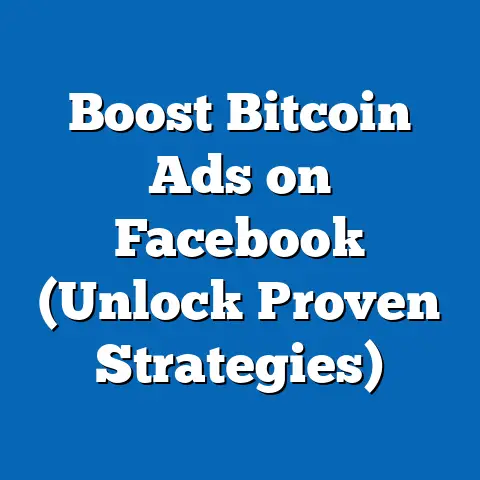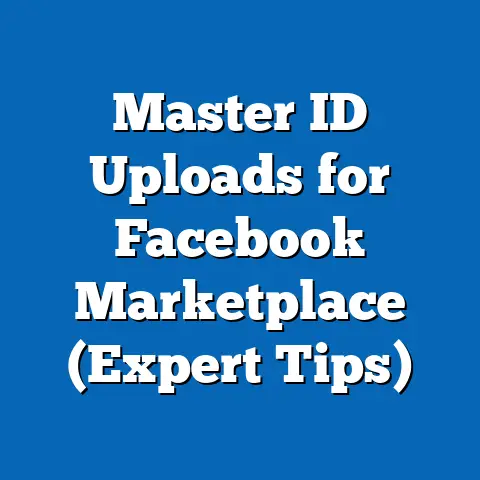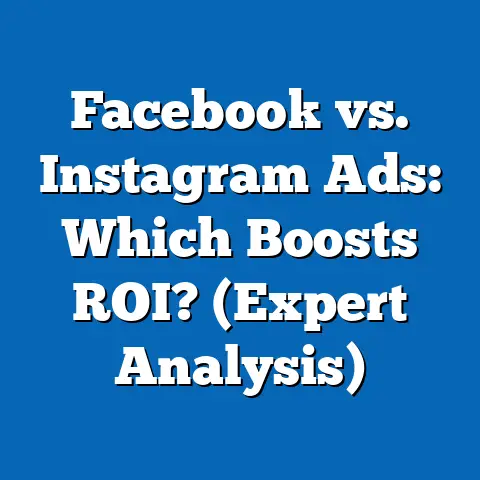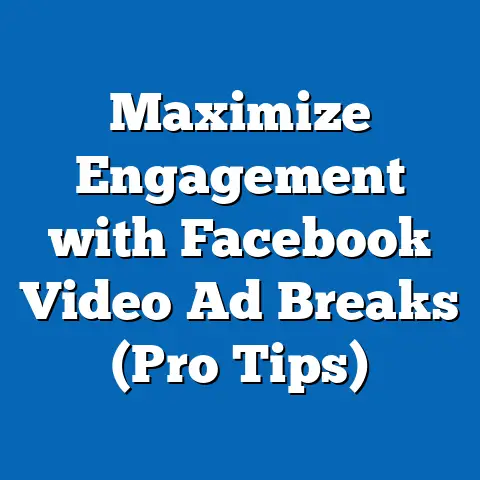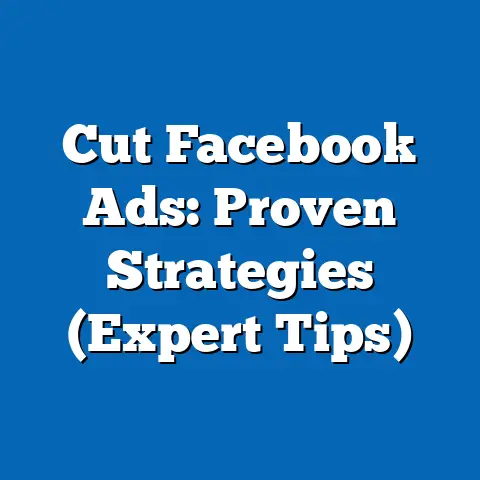Maximize Facebook Ads in Groups (Proven Strategies Unveiled)
Maximize Facebook Ads in Groups: Proven Strategies Unveiled
Facebook has evolved from a simple social network to a multifaceted platform where people connect, share, and discover. For businesses, this translates into an unparalleled opportunity to reach target audiences with precision and scale. While many focus on newsfeed ads or page promotions, there’s a hidden gem within Facebook’s ecosystem: Facebook Groups.
Facebook Groups are communities built around shared interests, hobbies, or affiliations. They foster discussion, provide support, and create a sense of belonging. This makes them incredibly valuable for advertisers who want to connect with highly engaged and targeted audiences. Think about it: people join groups because they’re genuinely interested in the topic. That inherent interest makes them more receptive to relevant ads.
I remember working with a local bookstore struggling to compete with online giants. We decided to focus our Facebook ad strategy on local book clubs and reading groups. The results were phenomenal. Not only did we drive traffic to their store, but we also fostered a sense of community and loyalty that translated into repeat customers.
In this article, I’m going to show you how to unlock the potential of Facebook Ads in groups. We’ll explore everything from understanding the nuances of group dynamics to crafting compelling ad copy and measuring your success. By the end, you’ll have a comprehensive toolkit to maximize your ROI and build meaningful connections with your target audience.
Understanding Facebook Groups
Facebook Groups are essentially digital meeting places where people with common interests gather to share information, ask questions, and connect with each other. They’re the modern-day equivalent of neighborhood clubs or hobbyist gatherings. This sense of community is what makes them so powerful for advertising.
Different Types of Groups
It’s crucial to understand the different types of Facebook Groups because they impact your advertising approach.
- Public Groups: These are open to anyone on Facebook. Anyone can see the group’s content and join the group. This makes them ideal for broad-reach advertising.
- Closed Groups: These groups require approval from an admin or moderator to join. While the content is hidden from non-members, the group itself is visible on Facebook. This allows you to target ads to people who are likely interested in the group’s topic but haven’t joined yet.
- Secret Groups: These groups are completely hidden from search results. Only members can see the group and its content. Advertising in secret groups is tricky because you can’t target them directly. However, you can use other targeting parameters to reach members who share similar interests.
I once made the mistake of running a very generic ad campaign targeting a broad demographic, assuming that it would resonate with members of a public group dedicated to a niche hobby. The ad was completely irrelevant and received a lot of negative feedback. That’s when I realized the importance of tailoring my message to the specific interests and expectations of the group’s members.
Groups vs. Pages: Why the Distinction Matters
Facebook Pages are primarily designed for businesses and brands to establish an online presence and share information. They’re essentially one-way communication channels where businesses broadcast their message to their followers.
Groups, on the other hand, are designed for two-way communication and interaction. They’re about fostering a sense of community and encouraging members to participate in discussions.
This distinction is crucial for advertising. In groups, you need to be more authentic and engaging. Simply blasting out promotional messages won’t work. You need to create ads that spark conversations and provide value to the members.
Benefits of Engaging with Groups
Engaging with a community in a group setting offers several benefits:
- Higher Engagement Rates: People in groups are generally more engaged than those on regular Facebook pages. They’re actively seeking information and connection, making them more likely to interact with your ads.
- Increased Trust: By participating in group discussions and providing valuable insights, you can build trust with members. This trust can translate into increased brand loyalty and sales.
- Targeted Reach: Groups allow you to reach a highly targeted audience based on their shared interests and affiliations. This can significantly improve your ad performance and reduce your advertising costs.
- Direct Feedback: Groups provide a direct channel for receiving feedback on your products, services, and ads. This feedback can be invaluable for improving your marketing efforts.
Key Takeaway: Understand the different types of Facebook Groups and their dynamics. Tailor your advertising approach to the specific characteristics of each group to maximize your engagement and ROI.
The Importance of Targeting
Targeting is the cornerstone of any successful Facebook advertising campaign, and it’s especially crucial when advertising in groups. You can’t just throw money at Facebook and hope for the best. You need to carefully define your target audience and create ads that resonate with their specific interests and needs.
Leveraging Facebook’s Targeting Capabilities
Facebook offers a wide range of targeting options that allow you to reach your ideal customers with laser precision. Here are some of the most relevant targeting options for advertising in groups:
- Interests: Target people based on their expressed interests, hobbies, and activities. This is a great way to reach members of groups related to your niche.
- Behaviors: Target people based on their online behavior, such as purchase history, device usage, and travel habits. This can help you identify members of groups who are likely to be interested in your products or services.
- Demographics: Target people based on their age, gender, location, education, and other demographic factors. This can help you narrow down your audience and create ads that are relevant to their specific needs.
- Custom Audiences: Create custom audiences based on your existing customer data, such as email lists or website visitors. This allows you to target members of groups who are already familiar with your brand.
- Lookalike Audiences: Create lookalike audiences based on your existing custom audiences. This allows you to reach new people who share similar characteristics with your best customers.
I learned the hard way that neglecting proper targeting is a recipe for disaster. I once ran an ad campaign targeting a group of gardening enthusiasts with a generic offer for lawn care services. The ad bombed because it wasn’t relevant to their interests. They were interested in growing plants, not maintaining lawns. That’s when I realized the importance of aligning my targeting with the specific interests of the group’s members.
Identifying the Right Groups for Your Niche
Finding the right groups to target is crucial for success. Here are some tips for identifying relevant groups:
- Search Facebook: Use the Facebook search bar to find groups related to your niche or industry.
- Analyze Competitors: See which groups your competitors are targeting.
- Use Facebook Audience Insights: This tool can help you identify groups that your target audience is interested in.
- Join Relevant Groups: Join groups related to your niche and observe the discussions. This will give you valuable insights into the interests and needs of the members.
Analyzing Group Demographics and Interests
Once you’ve identified potential groups to target, it’s important to analyze their demographics and interests. This will help you tailor your ads to the specific characteristics of the group’s members.
- Check Group Demographics: Some groups provide demographic information about their members.
- Analyze Group Discussions: Pay attention to the topics that are being discussed in the group. This will give you insights into the interests and concerns of the members.
- Use Facebook Audience Insights: This tool can provide valuable insights into the demographics and interests of people who are interested in specific topics.
Key Takeaway: Master Facebook’s targeting capabilities and invest time in identifying the right groups for your niche. Analyze group demographics and member interests to tailor your ads for maximum relevance and impact.
Crafting Effective Ads for Groups
Creating effective ads for Facebook Groups requires a different approach than creating ads for the general newsfeed. You need to be more authentic, engaging, and relevant to the specific interests of the group’s members.
Compelling Ad Content
Here are some tips for creating compelling ad content that resonates with group members:
- Speak Their Language: Use the same language and terminology that the group members use. This will make your ads feel more authentic and relatable.
- Address Their Pain Points: Identify the problems and challenges that the group members are facing and address them in your ads.
- Offer Solutions: Provide valuable solutions to the problems that the group members are facing.
- Be Authentic: Don’t try to be someone you’re not. Be genuine and transparent in your ads.
- Tell a Story: Use storytelling to connect with the group members on an emotional level.
I once created an ad for a group of new parents that simply featured a picture of my own messy living room with toys scattered everywhere. The caption read, “Is your house a disaster zone too? You’re not alone!” The ad resonated with the group members because it was authentic and relatable. It generated a lot of engagement and drove traffic to my website.
The Power of Authentic Messaging
Authentic messaging is crucial for success in Facebook Groups. People are more likely to trust ads that feel genuine and transparent. Avoid using overly promotional language or making unrealistic claims. Instead, focus on providing valuable information and building relationships with the group members.
Best Practices for Visuals, CTAs, and Ad Formats
- Visuals: Use high-quality images or videos that are relevant to the group’s topic and the content of your ad.
- Calls-to-Action: Use clear and concise calls-to-action that tell people what you want them to do (e.g., “Learn More,” “Shop Now,” “Join the Discussion”).
- Ad Formats: Experiment with different ad formats, such as image ads, video ads, and carousel ads, to see what works best for your target audience.
Examples of Successful Ads
Here are some examples of successful ads that have been well-received in group environments:
- A local restaurant: Shared a behind-the-scenes video of their chef preparing a popular dish in a foodies group.
- A fitness coach: Offered a free workout guide in a fitness group.
- A small business owner: Shared their personal story of overcoming challenges in a business owners group.
Key Takeaway: Craft compelling ad content that speaks the language of the group, addresses their pain points, and offers valuable solutions. Embrace authentic messaging and experiment with different visuals, CTAs, and ad formats to find what resonates best.
Strategies for Engagement
The goal of advertising in Facebook Groups is not just to generate sales, but also to build relationships and foster engagement. Create ads that encourage interaction and participation, rather than simply promoting your products or services.
Encouraging Interaction
Here are some strategies for creating ads that encourage interaction:
- Ask Questions: Ask questions that are relevant to the group’s topic and encourage people to share their thoughts and opinions.
- Run Polls: Create polls to gather feedback and opinions from the group members.
- Host Contests: Run contests or giveaways to generate excitement and engagement.
- Share Interesting Content: Share valuable and interesting content that is relevant to the group’s topic.
Lead Magnets
Lead magnets are valuable resources that you offer in exchange for people’s contact information. They’re a great way to capture interest within groups and build your email list.
- Offer a Free Ebook: Create a free ebook on a topic that is relevant to the group’s interests.
- Provide a Discount Code: Offer a discount code to group members who sign up for your email list.
- Offer a Free Trial: Provide a free trial of your product or service to group members.
Contests, Polls, and Interactive Content
Contests, polls, and interactive content are great ways to drive engagement and generate excitement within groups.
- Run a Photo Contest: Ask group members to share photos related to the group’s topic.
- Create a Quiz: Create a quiz that tests people’s knowledge of the group’s topic.
- Host a Live Q&A Session: Host a live Q&A session with an expert on the group’s topic.
Responding to Comments and Fostering Discussions
It’s important to respond to comments and foster discussions around your ads. This will show that you’re engaged and interested in the group’s members. It also gives you an opportunity to build relationships and answer questions.
I made it a point to personally respond to every comment on my ads in the new parents group I mentioned earlier. I answered questions, offered advice, and shared my own experiences. This created a sense of community and trust that led to a significant increase in sales.
Key Takeaway: Focus on creating ads that encourage interaction and engagement. Use lead magnets, contests, polls, and interactive content to capture interest and build your audience. Respond to comments and foster discussions to build relationships and establish trust.
Measuring Success and Optimizing Ads
Measuring the success of your Facebook Ad campaigns in groups is crucial for optimizing your strategy and maximizing your ROI. You need to track the right metrics and analyze the data to identify what’s working and what’s not.
Key Metrics
Here are some of the key metrics to track when running Facebook Ads in groups:
- Engagement Rate: Measures the level of interaction with your ads (e.g., likes, comments, shares).
- Click-Through Rate (CTR): Measures the percentage of people who click on your ad after seeing it.
- Conversion Rate: Measures the percentage of people who take a desired action after clicking on your ad (e.g., making a purchase, signing up for your email list).
- Cost Per Click (CPC): Measures the cost of each click on your ad.
- Cost Per Conversion (CPC): Measures the cost of each conversion.
- Return on Ad Spend (ROAS): Measures the revenue generated for every dollar spent on advertising.
Tracking Ad Performance
Facebook Ads Manager provides a wealth of data that you can use to track the performance of your ads in groups. Pay attention to the following:
- Campaign Performance: Track the overall performance of your campaigns to see which ones are generating the best results.
- Ad Set Performance: Track the performance of your ad sets to see which targeting options are most effective.
- Ad Performance: Track the performance of your individual ads to see which ones are resonating best with your audience.
A/B Testing
A/B testing involves creating multiple versions of your ads and testing them against each other to see which one performs best. This is a great way to optimize your ads and improve your results.
- Test Different Headlines: Try different headlines to see which one grabs people’s attention.
- Test Different Images: Try different images to see which one resonates best with your audience.
- Test Different Calls-to-Action: Try different calls-to-action to see which one encourages people to take action.
- Test Different Targeting Options: Try different targeting options to see which one reaches the most relevant audience.
The Importance of Feedback Loops
Creating a feedback loop is essential for continuous improvement. Regularly review your ad performance data and solicit feedback from group members. Use this information to refine your strategy and optimize your ads.
Key Takeaway: Track the right metrics, analyze your data, and use A/B testing to optimize your ads. Create a feedback loop to continuously improve your strategy and maximize your ROI.
Conclusion
Facebook Groups offer a unique and powerful opportunity for advertisers to connect with highly engaged and targeted audiences. By understanding the dynamics of group communities, crafting compelling ad content, fostering engagement, and measuring your results, you can maximize your Facebook Ad efforts and build meaningful connections with your target audience.
Remember, the key to success is to be authentic, relevant, and engaging. Don’t just blast out promotional messages. Instead, focus on providing value, building relationships, and fostering a sense of community. By following the proven strategies outlined in this article, you can unlock the potential of Facebook Ads in groups and achieve your marketing goals. So, go out there, experiment, and see what works best for your business. The possibilities are endless!

